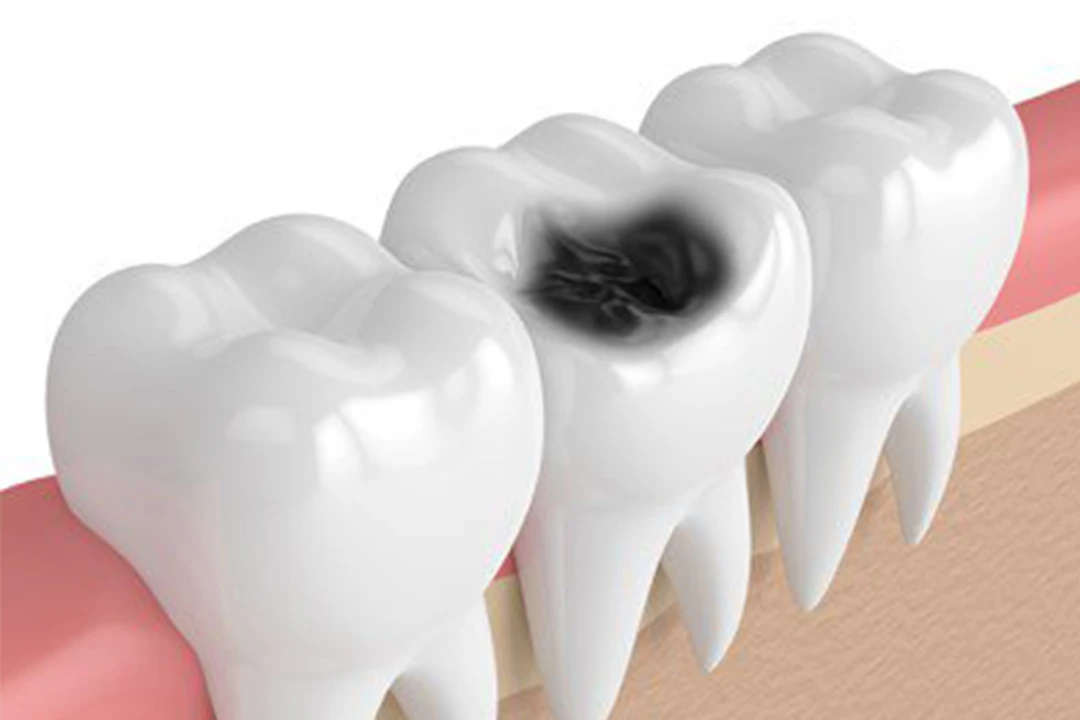What is Tooth Decay?
Tooth decay is when the outer layer of the tooth called the enamel starts to break down allowing bacteria into the tooth which causes a cavity. Tooth decay is a common dental issue that occurs when bacteria in the mouth produces acids that eat away at the enamel of a tooth. This process can lead to the development of cavities, which are small holes in the surface of a tooth.
What Are The Causes of Tooth Decay?
Tooth decay can be caused by a combination of factors such as bacteria, sugar, and poor oral hygiene. The bacteria in our mouths produces plaque, which is a sticky film of bacteria that can adhere to teeth. When sugar is consumed, the bacteria in plaque uses it to produce acid, which then attacks the enamel of the teeth, leading to decay. Poor oral hygiene, such as not brushing and flossing regularly, can allow plaque to build up and increase the risk of tooth decay over the course of time.
What Are The Signs And Symptoms of Tooth Decay?
 You may not experience any symptoms with tooth decay at first since it is not in the nerve of the tooth, but if left untreated, the decay may reach the nerve of the tooth causing you pain and a need for root canal treatment.
You may not experience any symptoms with tooth decay at first since it is not in the nerve of the tooth, but if left untreated, the decay may reach the nerve of the tooth causing you pain and a need for root canal treatment.
Some signs and symptoms of tooth decay may include things such as sensitivity to hot and cold temperatures, pain or discomfort when biting or chewing, visible holes or pits in the teeth, and brown, black, or white spots on the teeth. In advanced stages, the decay can cause a tooth abscess, a painful infection at the root of the tooth, and swelling in the gums. If you experience any of these symptoms, it is important to seek dental treatment promptly to prevent further damage to your teeth.
How is Tooth Decay Diagnosed?
Tooth decay is diagnosed by a visual and clinical examination accompanied by diagnostic tools such as x rays. The doctor will be able to determine if you have a cavity.
What Are Possible Treatments For Tooth Decay?
A simple tooth colored filling can be placed to treat tooth decay. If the decay is large then a crown may be placed. If the decay is into the nerve, a root canal may be needed to restore the tooth. If left untreated and the tooth has too much decay, it may need to be extracted.
Are There Preventative Steps or Measures To Avoid Tooth Decay?
Brushing twice daily with a fluoride toothpaste and flossing daily can help to prevent cavities. Also by eating a nutritious diet avoiding sugar and limiting snacks. Also coming in for regular dental checkups and cleanings will help to prevent tooth decay.
What Are The Risks If Tooth Decay Is Left Untreated?
If tooth decay is left untreated, it could lead to needing a more invasive procedure such as a root canal, or even an extraction.
Key Takeaways About Tooth Decay (Top 3-5 points to remember from everything)
Tooth decay is caused by bacteria that damages the enamel of the tooth. To diagnose, you will need to see a dentist and have an examination and x rays taken. Tooth decay can be fixed with a simple filling if it is caught early, however if it is left untreated you may need a root canal, crown , or extraction.
Recommended Next Steps For Tooth Decay
If you suspect you have tooth decay or if the doctor diagnoses you with tooth decay you will need to schedule an appointment to have the decay removed.
